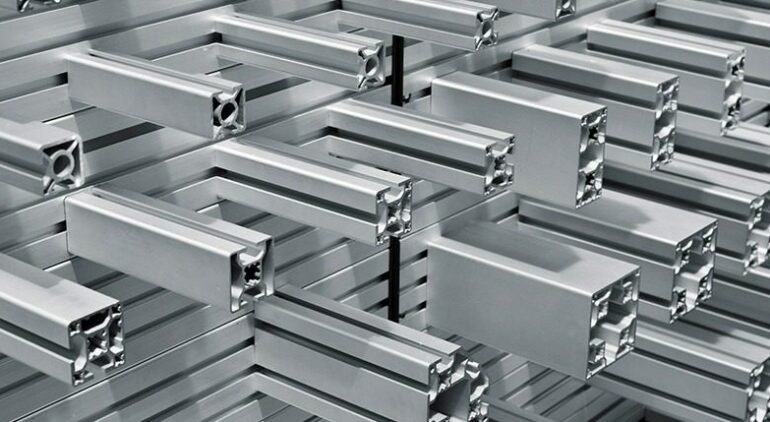Understanding Aluminium Tempers & Use Case
As a highly versatile metal, aluminium finds extensive use across industries due to its lightweight nature, corrosion resistance, and exceptional thermal and electrical conductivity. Aluminium tempers is a process of strengthening through alloy and, depending upon the composition, with the process of heat treatment or cold working. Mechanical properties of aluminium, like low density, high strength, and corrosion resistance, allow it to be tempered and customized for a specific application.
In this article, we will understand the concept of various types of aluminium tempers and the different use cases in aluminium extrusion.
What Are Aluminium Tempers?
Aluminium tempers refer to the specific mechanical properties and characteristics achieved through a combination of alloy composition and heat treatment processes. The process involves:
- Heating the aluminium at a specific temperature.
- Cooling it in a controlled environment.
- Altering its microstructure.
- Changing its mechanical properties.
The temper designation system, established by the Aluminum Association, provides a standardized way to classify and identify different tempers.
Understanding the Aluminium Temper System:
The temper designation system for aluminium alloys consists of a letter followed by a series of numbers. The letter indicates the general temper group, while the numbers provide more specific information about the temper’s mechanical properties. Let’s explore some commonly used tempers and their characteristics in the context of aluminium extrusion.
- F Temper (As Fabricated): The F temper represents the as-fabricated condition of aluminium, indicating that no additional heat treatment has been performed after the initial shaping process. This temper is typically used for components where the mechanical properties achieved through alloy composition and work hardening are sufficient for the intended application.
- O Temper (Annealed): The O temper refers to the annealed condition, achieved by heating the aluminium to a specific temperature and then slowly cooling it. This temper provides maximum softness and ductility, making it suitable for applications where formability is essential, such as deep drawing or bending operations.
- H Temper (Strain Hardened): The H temper series refers to aluminium alloys undergoing strain hardening or cold working processes. Strain hardening involves subjecting the material to plastic deformation, such as rolling or drawing, which increases its strength and hardness. H tempers are denoted by numbers that indicate the degree of cold work applied, with higher numbers representing greater hardness and strength.
- T Temper (Heat-Treated): The T temper series is one of the most commonly used tempers in aluminium extrusion. It involves heat treatment processes that combine mechanical properties, including strength, hardness, and workability.
The T temper series is further divided into subcategories, such as T4, T5, and T6, each offering specific attributes.
- T4 Temper: This temper is achieved through solution heat treatment and natural ageing, improving formability and moderate strength. T4 is commonly used in applications requiring increased ductility and ease of shaping.
- T5 Temper: The T5 temper involves artificial ageing after solution heat treatment, leading to improved mechanical properties, such as increased strength and hardness. T5 is often utilized in applications that require higher strength and good corrosion resistance.
- T6 Temper: The T6 temper represents a combination of solution heat treatment and artificial ageing, resulting in the highest mechanical properties, including excellent strength and hardness. T6 is widely employed in applications where superior strength and structural integrity are paramount.
Use Cases in Aluminium Extrusion
Aluminium extrusion is a process that shapes aluminium profiles by forcing the metal through a shaped die. Different tempers are selected based on the specific requirements of the extruded profiles and their intended applications. Some common use cases for various tempers in aluminium extrusion are O temper profiles, often used in applications where formability is crucial, such as architectural trim, decorative components, and lightweight structures.
JM Aluminium: Your Trusted Aluminium Extrusion Manufacturer in India
At JM Aluminium, we take pride in being India’s leading aluminium extrusion manufacturer. We understand the importance of aluminium tempers and our crucial role in aluminium extrusion processes. Whether you are in the construction, automotive, or any other industry requiring high-quality aluminium profiles, we are here with a team with having comprehensive understanding of aluminium tempers and exploring their use cases in the field of aluminium extrusion to cater to your specific needs and deliver exceptional products shaped to your requirements.
Conclusion
Aluminium tempers refer to the mechanical properties achieved through heat treatment processes, classified using letters and numbers. Common tempers include F (as fabricated), O (annealed), T (heat-treated), and H (strain hardened). In aluminium extrusion, tempers are selected based on desired profile characteristics. O temper offers formability, T temper provides strength and workability, and H temper increases hardness and strength. Each temper finds applications in architecture, automotive, and manufacturing.At JM Aluminium, a reputable aluminium extrusion manufacturer in India, we pride ourselves on our comprehensive understanding of aluminium tempers and their vital role in the extrusion process. If you require high-quality aluminium profiles for construction, automotive, or any other industry, our skilled team is equipped with the knowledge and expertise to meet your specific needs. We explore the use cases of different tempers in aluminium extrusion to deliver exceptional products that align with your requirements.




